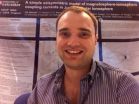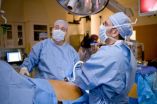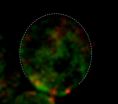(Press-News.org) University of Leicester planetary scientists have found new evidence suggesting auroras – similar to Earth's Aurora Borealis - occur on bodies outside our solar system.
Auroras occur on several planets within our solar system, and the brightest - on Jupiter – are 100 times brighter than those on Earth. However, no auroras have yet been observed beyond Neptune.
A new study led by University of Leicester lecturer Dr Jonathan Nichols has shown that processes strikingly similar to those which power Jupiter's auroras could be responsible for radio emissions detected from a number of objects outside our solar system.
In addition, the radio emissions are powerful enough to be detectable across interstellar distances – meaning that auroras could provide an effective way of observing new objects outside our solar system.
Auroras occur when charged particles in an object's magnetosphere collide with atoms in its upper atmosphere, causing them to glow. However, before hitting the atmosphere, these particles also emit radio waves into space.
The study, Origin of Electron Cyclotron Maser Induced Radio Emissions at Ultracool Dwarfs: Magnetosphere-Ionosphere Coupling Currents, which recently appeared in the Astrophysical Journal, shows that this phenomenon is not limited to our solar system.
It shows that the radio emissions from a number of ultracool dwarfs may be caused in a very similar, but significantly more powerful, way to Jupiter's auroras.
Dr Nichols, a Lecturer and Research Fellow in the University of Leicester's Department of Physics and Astronomy, said: "We have recently shown that beefed-up versions of the auroral processes on Jupiter are able to account for the radio emissions observed from certain "ultracool dwarfs" - bodies which comprise the very lowest mass stars - and "brown dwarfs" - 'failed stars' which lie in between planets and stars in terms of mass.
"These results strongly suggest that auroras do occur on bodies outside our solar system, and the auroral radio emissions are powerful enough - one hundred thousand times brighter than Jupiter's - to be detectable across interstellar distances."
The paper, which also involved researchers at the Center for Space Physics, Boston University, USA, could have major implications for the detection of planets and objects outside our solar system which could not be discovered with other methods.
What's more, the radio emission could provide us with key information about the length of the planet's day, the strength of its magnetic field, how the planet interacts with its parent star and even whether it has any moons.
Dr Nichols added: "I am part of a group who have recently been awarded time on the Low Frequency Array (LOFAR) - centred in the Netherlands but with stations across a number of countries in northern Europe including the UK - to try to observe auroras on exoplanets, so hopefully there will be some interesting results soon."
INFORMATION:
Dr Nichols' work was funded by the Science and Technology Facilities Council.
The LOFAR exoplanets work is led by Philippe Zarka, based at CNRS Observatory, Paris.
For more information, please contact Dr Nichols on +44 (0)116 252 5049 or at: jdn@ion.le.ac.uk
The full paper can be found at: http://iopscience.iop.org/0004-637X/760/1/59
For more information about the Science and Technology Facilities Council visit: http://www.stfc.ac.uk/About+STFC/19072.aspx
New evidence indicates auroras occur outside our solar system
University of Leicester-led study suggests 'northern lights' occur on some small and 'failed' stars
2013-01-22
ELSE PRESS RELEASES FROM THIS DATE:
Penn study sheds light on the complexity of gene therapy for congenital blindness
2013-01-22
PHILADELPHIA - Independent clinical trials, including one conducted at the Scheie Eye Institute at the Perelman School of Medicine, have reported safety and efficacy for Leber congenital amaurosis (LCA), a congenital form of blindness caused by mutations in a gene (RPE65) required for recycling vitamin A in the retina. Inherited retinal degenerative diseases were previously considered untreatable and incurable. There were early improvements in vision observed in the trials, but a key question about the long-term efficacy of gene therapy for curing the retinal degeneration ...
Study: Bariatric surgery in extremely obese adolescents
2013-01-22
This time of year many people make resolutions to live a healthier lifestyle, exercise more, lose weight and eat better. For the adolescents who are extremely obese in this country, diet and exercise alone often are not enough to get their weight down. Some of those teens will require weight loss surgery to improve their overall health. According to a recent study published in the January print issue of the Journal of Pediatric Surgery, bariatric surgery in extremely obese adolescents also was shown to be beneficial in helping to reverse previously undiagnosed cardiovascular ...
UBC research: Forget about fair – It's better when bosses pick favorites
2013-01-22
A new study from the University of British Columbia Sauder School of Business shows that bosses should pick favourites if they want top performing teams.
"Conventional wisdom tells us that we should treat everyone the same to create a collegial and productive work atmosphere," says Sauder Professor Karl Aquino, who co-authored the forthcoming study for the Journal of Business Ethics. "But our research shows this can be a disincentive for workers who would otherwise go above and beyond on behalf of the team with a little bit of extra attention."
In a series of experiments, ...
A relative from the Tianyuan Cave
2013-01-22
This press release is available in German.
An international team of researchers including Svante Pääbo and Qiaomei Fu of the Max Planck Institute for Evolutionary Anthropology in Leipzig, Germany, sequenced nuclear and mitochondrial DNA that had been extracted from the leg of an early modern human from Tianyuan Cave near Beijing, China. Analyses of this individual's DNA showed that the Tianyuan human shared a common origin with the ancestors of many present-day Asians and Native Americans. In addition, the researchers found that the proportion of Neanderthal and Denisovan-DNA ...
Enzyme replacement therapy shows promising results in X-linked myotubular myopathy
2013-01-22
A collaborative research team including a Medical College of Wisconsin (MCW) pediatric neuropathologist successfully mitigated some of the effects of a muscular disease by using a new targeted enzyme replacement therapy strategy from 4s3 Bioscience.
The findings are published in the January edition of Human and Molecular Genetics http://hmg.oxfordjournals.org/content/early/2013/01/09/hmg.ddt003.full.pdf+html.
X-linked myotubular myopathy (XLMTM) is a severe muscle disease caused by an absence of a protein called myotubularin. There is currently no treatment for this ...
New 2D material for next generation high-speed electronics
2013-01-22
Scientists at CSIRO and RMIT University have produced a new two-dimensional material that could revolutionise the electronics market, making "nano" more than just a marketing term.
The material – made up of layers of crystal known as molybdenum oxides – has unique properties that encourage the free flow of electrons at ultra-high speeds.
In a paper published in the January issue of materials science journal Advanced Materials, the researchers explain how they adapted a revolutionary material known as graphene to create a new conductive nano-material.
Graphene was ...
Study of how eye cells become damaged could help prevent blindness
2013-01-22
Light-sensing cells in the eye rely on their outer segment to convert light into neural signals that allow us to see. But because of its unique cylindrical shape, the outer segment is prone to breakage, which can cause blindness in humans. A study published by Cell Press on January 22nd in the Biophysical Journal provides new insight into the mechanical properties that cause the outer segment to snap under pressure. The new experimental and theoretical findings help to explain the origin of severe eye diseases and could lead to new ways of preventing blindness.
...
Controlling spine metastases with tumor 'separation surgery' and high-dose stereotactic radiosurgery
2013-01-22
Charlottesville, VA (January 22, 2013). Researchers from Memorial Sloan-Kettering Cancer Center (New York, NY) have found that tumor "separation surgery" followed by high-dose hypofractionated stereotactic radiosurgery (SRS) or high-dose single-fraction SRS is safe and effective in controlling spinal metastases regardless of the radiosensitivity of the particular tumor type that has invaded the spine. This finding is fleshed out in the article "Local disease control for spinal metastases following 'separation surgery' and adjuvant hypofractionated or high-dose single-fraction ...
Evidence mounts for role of mutated genes in development of schizophrenia
2013-01-22
Johns Hopkins researchers have identified a rare gene mutation in a single family with a high rate of schizophrenia, adding to evidence that abnormal genes play a role in the development of the disease.
The researchers, in a report published in the journal Molecular Psychiatry, say that family members with the mutation in the gene Neuronal PAS domain protein 3 (NPAS3) appear at high risk of developing schizophrenia or another debilitating mental illnesses.
Normally functioning NPAS3 regulates the development of healthy neurons, especially in a region of the brain known ...
A diffusion trap
2013-01-22
KANSAS CITY, MO – Over the past several years, Rong Li, Ph.D., at the Stowers Institute for Medical Research has been making crucial discoveries about the development of cell polarity—the process by which one side of a cell becomes different from the other side. Such polarity is critical for the functioning of the vast majority of cells. The outside surface of skin cells is very different from the surface inside the body, for example, while nerve cells have delicately branching dendrites on one end and axons on the other. Li's lab studies yeast cells, which form a unique ...
LAST 30 PRESS RELEASES:
Norbert Holtkamp appointed director of Fermi National Accelerator Laboratory
New agentic AI platform accelerates advanced optics design
Biologists discover neurons use physical signals — not electricity — to stabilize communication
Researchers discover that a hormone can access the brain by hitchhiking
University of Oklahoma researcher awarded funding to pursue AI-powered material design
Exploring how the visual system recovers following injury
Support for parents with infants at pediatric check-ups leads to better reading and math skills in elementary school
Kids’ behavioral health is a growing share of family health costs
Day & night: Cancer disrupts the brain’s natural rhythm
COVID-19 vaccination significantly reduces risk to pregnant women and baby
The role of vaccination in maternal and perinatal outcomes associated with COVID-19 in pregnancy
Mayo Clinic smartwatch system helps parents shorten and defuse children's severe tantrums early
Behavioral health spending spikes to 40% of all children’s health expenditures, nearly doubling in a decade
Digital cognitive behavioral treatment for generalized anxiety disorder
Expenditures for pediatric behavioral health care over time and estimated family financial burden
Air conditioning in nursing homes and mortality during extreme heat
The Alps to lose a record number of glaciers in the next decade
What makes a good proton conductor?
New science reporting guide published for journalists in Bulgaria
New international study reveals major survival gaps among children with cancer
New science reporting guide published for journalists in Turkey
Scientists develop a smarter mRNA therapy that knows which cells to target
Neuroanatomy-informed brain–machine hybrid intelligence for robust acoustic target detection
Eight SwRI hydrogen projects funded by ENERGYWERX
The Lundquist Institute and its start-up company Vitalex Biosciences Announces Strategic Advancement of Second-Generation fungal Vaccine VXV-01 through Phase 1 Trials under $40 Million Competitive Con
Fine particles in pollution are associated with early signs of autoimmune disease
Review article | Towards a Global Ground-Based Earth Observatory (GGBEO): Leveraging existing systems and networks
Penn and UMich create world’s smallest programmable, autonomous robots
Cleveland researchers launch first major study to address ‘hidden performance killer’ in athletes
To connect across politics, try saying what you oppose
[Press-News.org] New evidence indicates auroras occur outside our solar systemUniversity of Leicester-led study suggests 'northern lights' occur on some small and 'failed' stars



